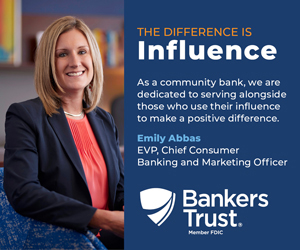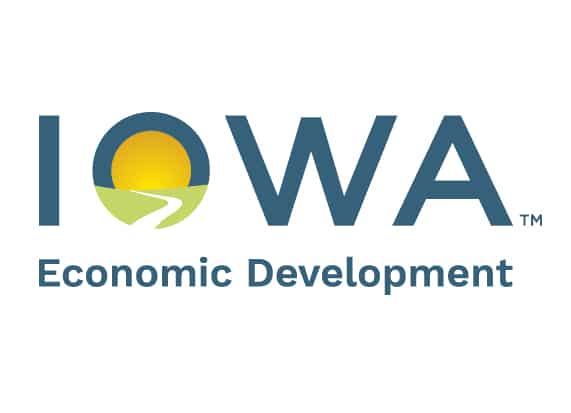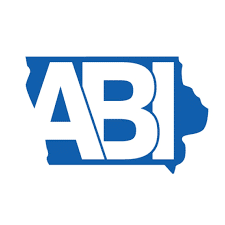Looking for an edge
State, schools seek apex in training for STEM workers

PERRY BEEMAN Feb 6, 2018 | 6:12 pm
6 min read time
1,481 wordsAll Latest News, Business Record Insider, Innovation and EntrepreneurshipTwo of four schools offering pre-apprenticeship programs with the help of the state are in Central Iowa, working to make sure students consider options ranging from certificates to four-year degrees.
Schools in Waukee, Boone, Spencer and Muscatine are part of a pilot program.
At Boone, that means the EDGE program is in its first year of operation, with four students working with Kruck Plumbing and Pritchard Brothers Plumbing & Heating to learn plumbing and mechanical techniques.
“They are going through a curriculum tailored to plumbing, heating and cooling, sheet metal, and electrical work,” said Boone High School Principal Kristopher Byam.
Chad Houston, president of Kruck, said the pre-apprenticeship programs help students get a head start. “The ultimate goal is to take care of part of a four-year apprenticeship before they leave school,” he said.
Byam said Associated Builders and Contractors Inc. has been working with the U.S. Department of Labor on the grant program that supports the pre-apprenticeships.
“We allow that curriculum in the public schools,” Byam said. “We have a safety program, forklift certification and labs. We are moving that to a lot younger students so when they leave they might be able to get into a second-year apprenticeship.”
It’s part of a statewide effort to make sure students know that four-year college or university degrees aren’t their only option.
The state reports that by 2024, Iowa will have more than 1,000 job openings in computer and math work, 600-plus in engineering and architecture jobs, and just more than 500 in science jobs. That’s why the state and various schools are trying to work on the problem now.
“Education happens in many ways, four-year degrees, two-year degrees, apprenticeships,” Byam said. “What are the different ways to achieve that?”
Gov. Kim Reynolds has pushed apprenticeships as an important part of Future Ready Iowa, a broad effort to expand the Iowa workforce. The program goal is for 70 percent of Iowa workers to have some type of post-high-school education by 2025, whether at a college or university or in a certificate program. That would mean adding 127,700 Iowans to the ranks of postsecondary education of some kind.
The U.S. Department of Labor granted Iowa $1.8 million to start pre-apprenticeship pilot programs, which are extensions of an already developed system of school programs in science, technology, engineering and mathematics.
For Kruck, the program is a chance to identify potential employees. “This gives us a head start on recruiting,” Houston said. “It’s competitive. There are a lot of contractors out there that need the workforce. A lot of the emphasis has been on college education,” to the point that there aren’t enough laborers, he added.
For Byam, the trick is to offer a full range of educational opportunities, including the trades. “We want them to be successful in whatever they choose to do,” he said of students.
Byam is working with Fareway on job opportunities such as meat-cutting. “They said if the students had six specific skills they would hire them on the spot,” he said.
He’s also talking with the city’s fire department about jobs as building inspectors, and looking at animal science and agriculture curricula.
Houston is spreading the word about the Boone program, in part for the good of his own company. “Finding that quality person that fits your team is tough,” he said. “This is an opportunity right here in town.”
Students interested in building trades are working with blueprints in class, then visiting construction sites to see the work take form.
Byam doesn’t expect to have students in each subject area every year, but he wants to offer a broad array of choices.
A similar program, Waukee APEX, will enroll its first students this spring, said Director Michelle Hill. APEX is in a building that opened in January 2017. The program hoped to add the pre-apprenticeships in fall 2017, but there were delays. Work on funding, staffing and business partners continued this semester.
Waukee High School already offers a construction leadership class that works on heating and cooling, electrical, carpentry, advanced manufacturing, robotics, engineering and technology. Hill said she’s working with Ankeny-based Accumold on possible instruction in information technology.
“We are finding that they are hiring our students right out of our program,” Hill said. “We’re connecting the dots.”
Hill said Waukee has had an internship program for 20 years and the APEX work-experience program for four. She said the pre-apprenticeship program makes it easier for juniors and seniors to explore careers. “They will be working on value-added projects with employers,” with possible work in medical technology, engineering and veterinary medicine.
“What we had missing was a lot of trades and information technology,” she said.
Juniors often explore, picking from 14 APEX courses in areas such as insurance, architecture and biomedicine. Seniors study a certain field one semester and complete an internship the second. Among the business partners are Bell Brothers Heating & Air Conditioning Inc., Webster Electric Inc. and Hubbell Realty Co. (construction management).
The overall program grew from 100 students in 2014 to 400 now. By the end of the year, 1,000 students will have been in the program.
The high demand for STEM (science, technology, engineering, mathematics) workers and the higher pay those jobs command have made this a good time to encourage high schools to test students’ interest in the fields before their senior year, said Carrie Rankin, assistant director for development for the Governor’s STEM Advisory Council. Many students can spend part of their junior year checking out welding, or information technology, or carpentry to see if they are interested. Then, in their senior year, they can get an internship that could pay them, plus earn them high school and college course credits while shortening their training at the local trade union — should they go that route.
“The earlier the better to get to students,” Rankin said. “This makes the connection between students and the companies so we can ‘grow our own,’ ” she added, meaning that the state can keep its own graduates, reducing the need to lure workers to Iowa.
“Pre-apprenticeships offer hands-on experience as early as ninth grade,” Rankin said. “That is so critical. Not all students are equipped to go down the pathway of a four-year degree. There are great, high-paying jobs in Iowa” in the trades and other fields that don’t necessarily require traditional bachelor’s or master’s degrees, she added.
“Students might not necessarily understand that there are opportunities for them in their communities, while they are still in high school,” Rankin added.
And if the students decide to shift gears later, what’s the harm? “What organization doesn’t have a need for science, engineering, math or critical thinking,” things that the pre-apprenticeships stress, Rankin said.
Students also work on big data applications and the application of technology. “It’s a huge eye-opener that students might not contemplate as part of a welding program,” Rankin said.
Doing some of the work in high school saves money on training programs later, she added. “And the businesses hope they are training future employees and keeping them in Iowa.”
Rankin said the state hopes to offer pre-apprenticeships beyond the four initial schools, which are developing a playbook for other schools to use to launch similar programs. Iowa State University is evaluating the programs to see if they are effective.
Georgia Van Gundy, executive director of the Iowa Business Council, said the pre-apprenticeships build on a system that gives students a chance to make money while getting a head start on their post-high-school education. “Apprenticeship programs allow students to earn while they learn and outline a very clear career path for them. And you move up the pay scale as you go,” even in school, Van Gundy said.
For many, apprenticeships allow someone to change career paths, or to improve one they’ve chosen, and workers are more likely to stay on the job after that training, she added.
Vermeer is working with Career Academy of Pella to train welders, giving the company a chance to size up candidates, Van Gundy said.
Utilities have worked with students on technician, plant worker and line crew work. Ruan is looking at opportunities.
“It shows that companies are looking at different ways to attract a workforce,” Van Gundy said.
Mike Ralston, president of the Iowa Association of Business and Industry, said the pre-apprenticeship programs are important additions to the work-related offerings.
“ABI members want to use this,” Ralston said. “They are having all kinds of difficulties” hiring help. Some have had to offer split shifts, flex time and other “creative” approaches to lure employees, he added. Some are offering higher pay.
“For too long businesspeople were too critical of education: ‘You aren’t getting us enough people.’ Now they really have to be a partner.”
And with ABI’s programs, Future Ready Iowa, the apprenticeships, internships, and certificate programs — along with support for colleges and universities — they are.








